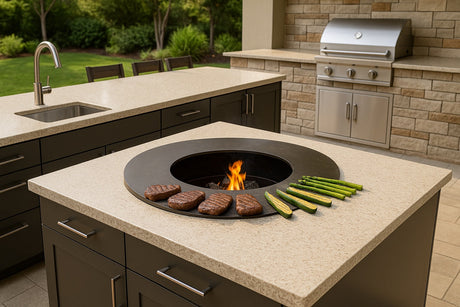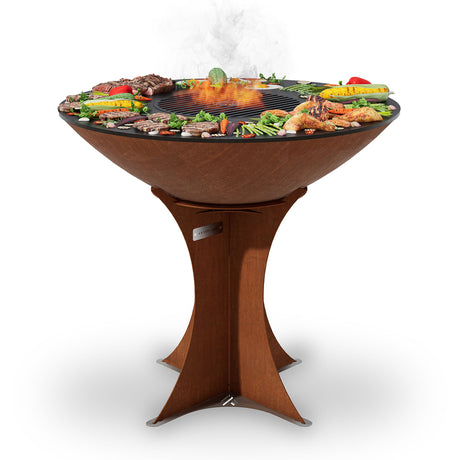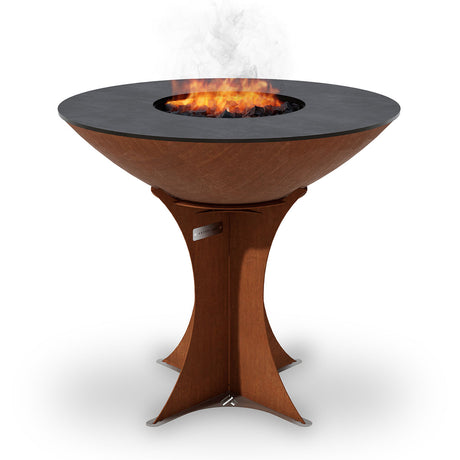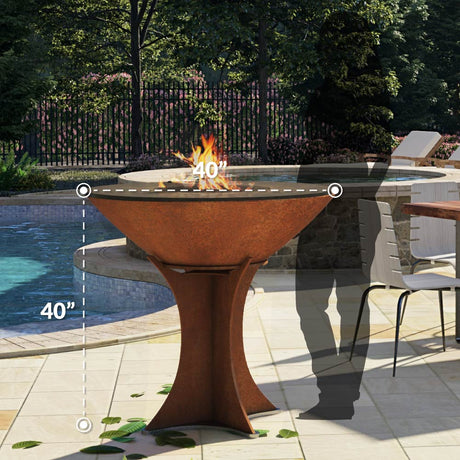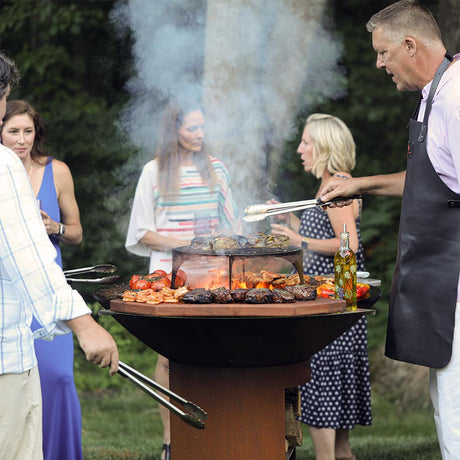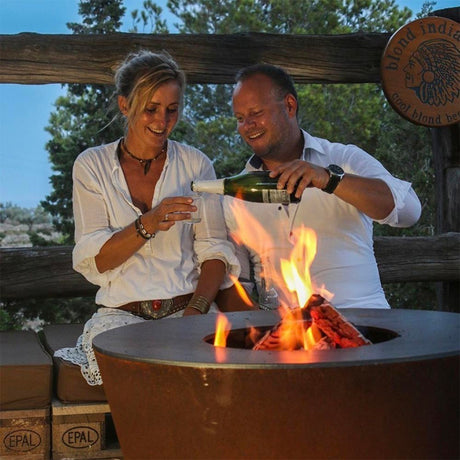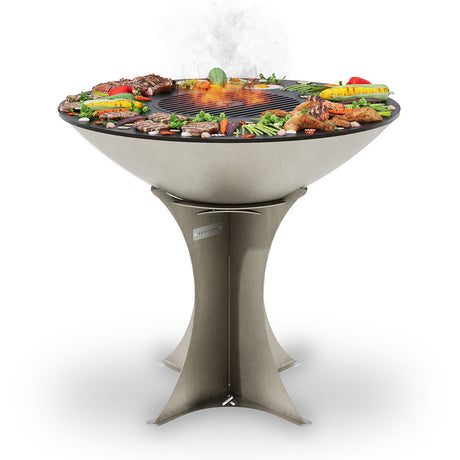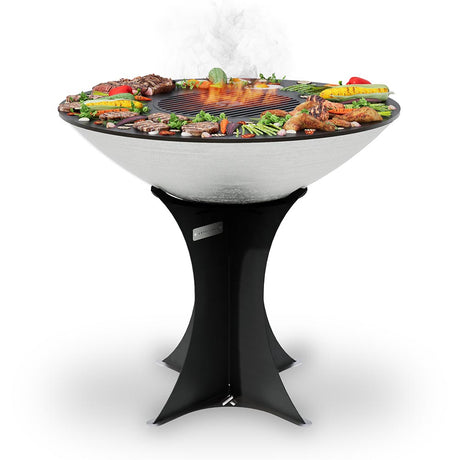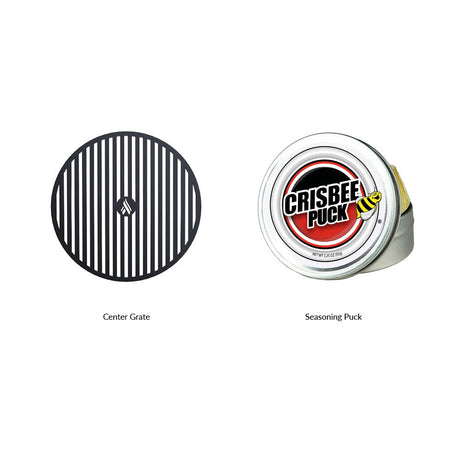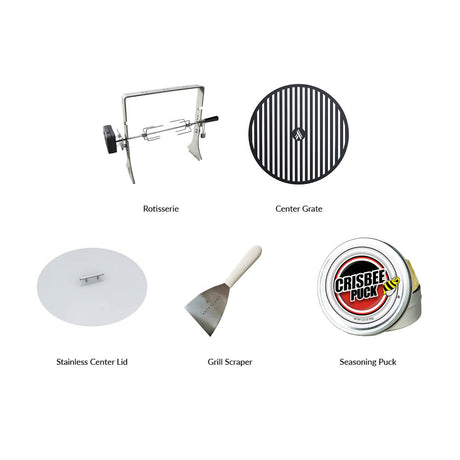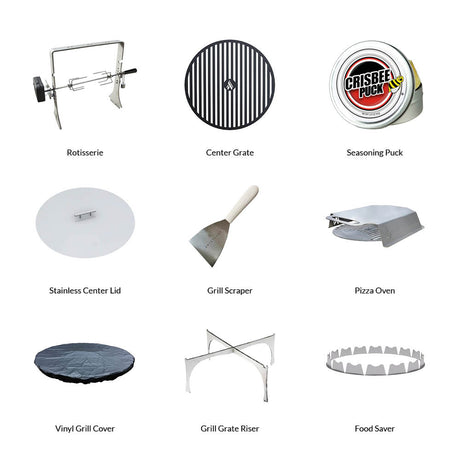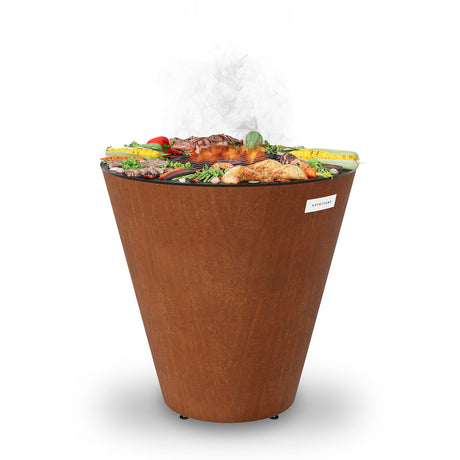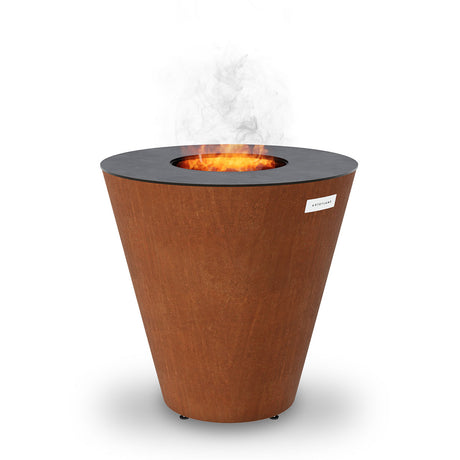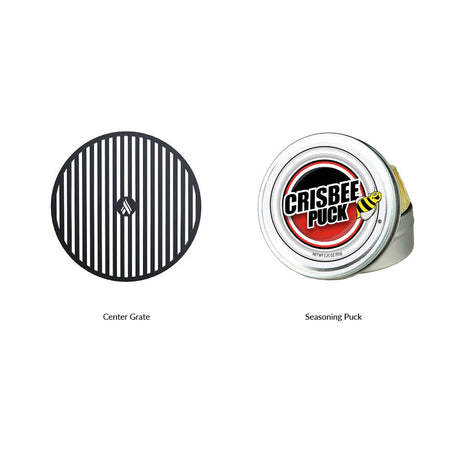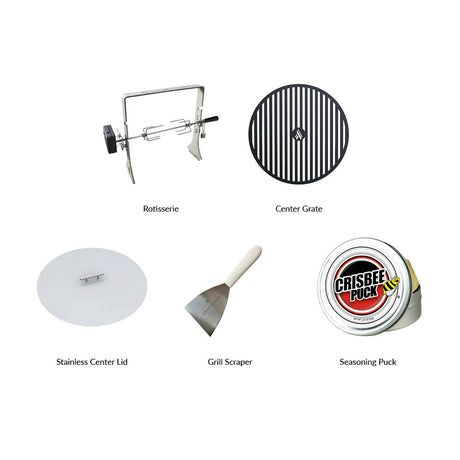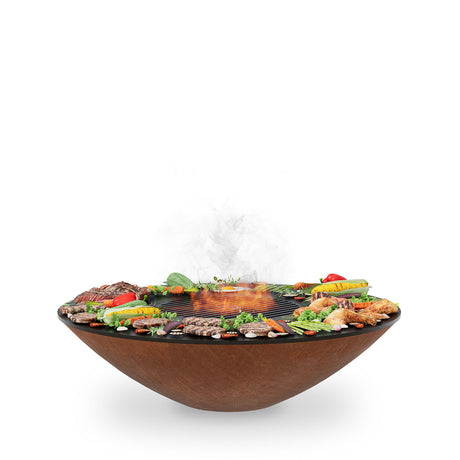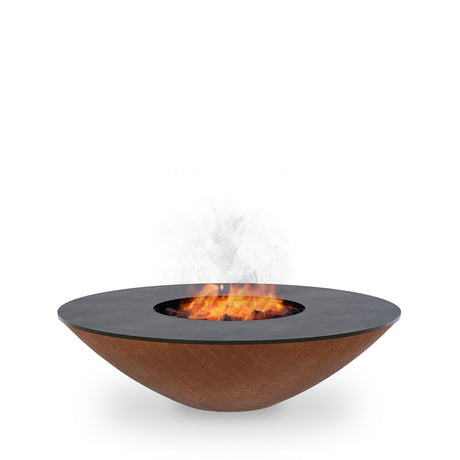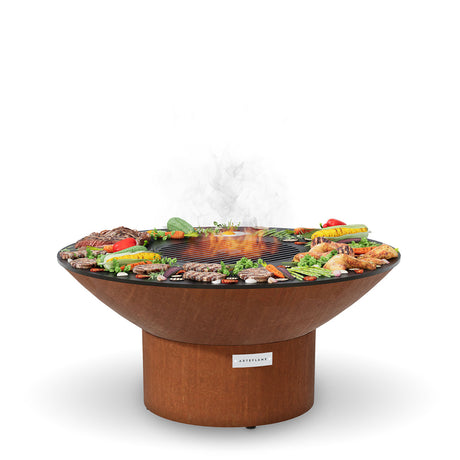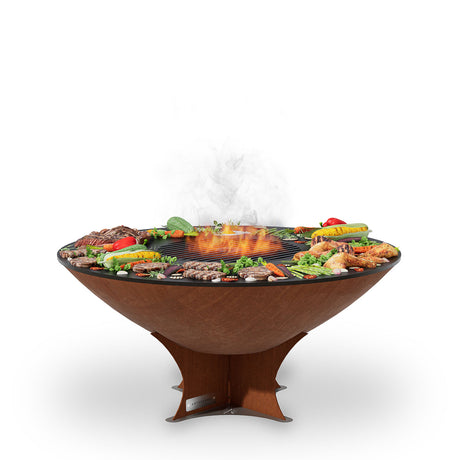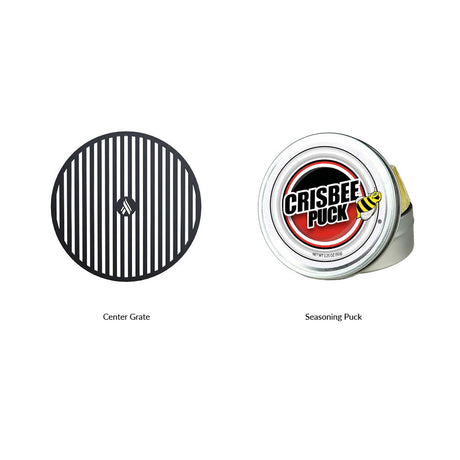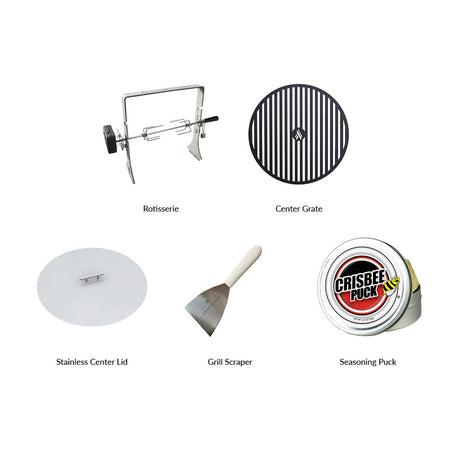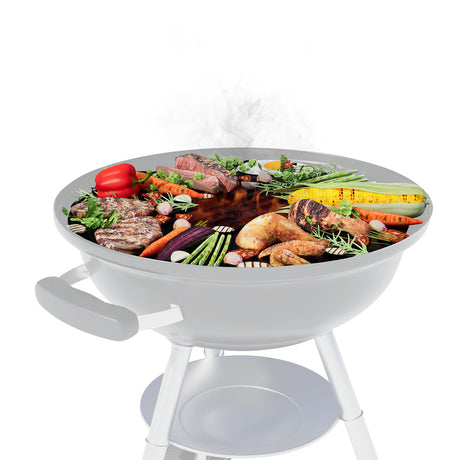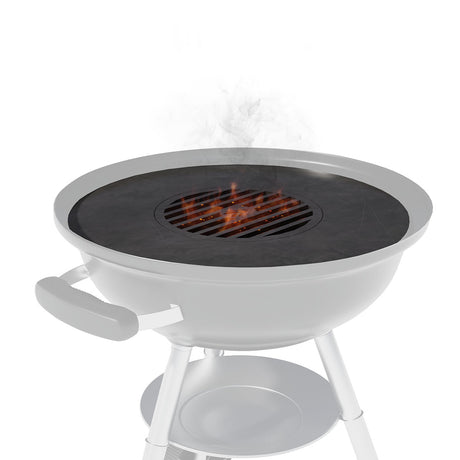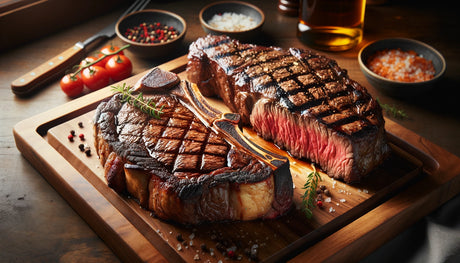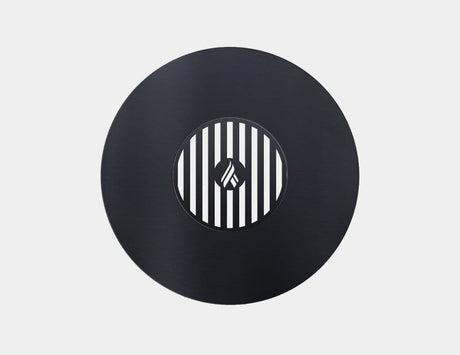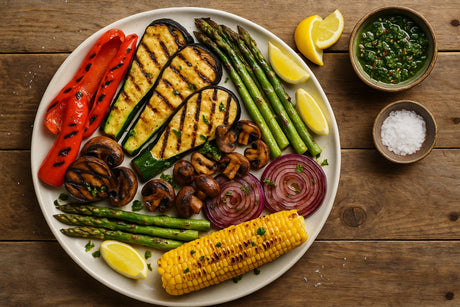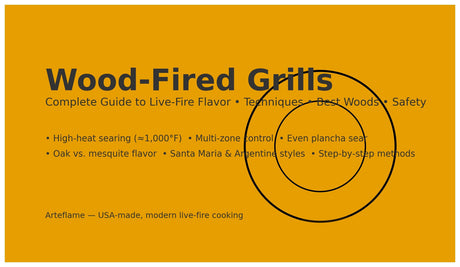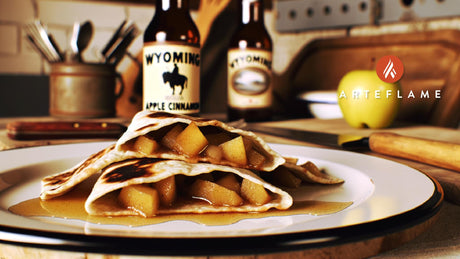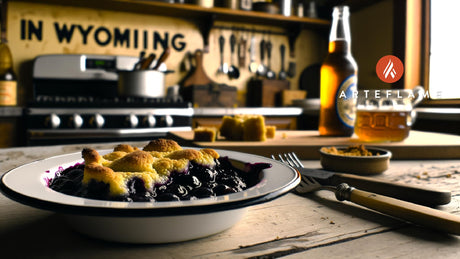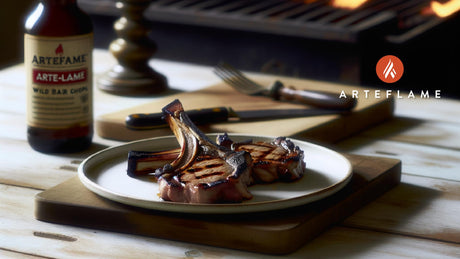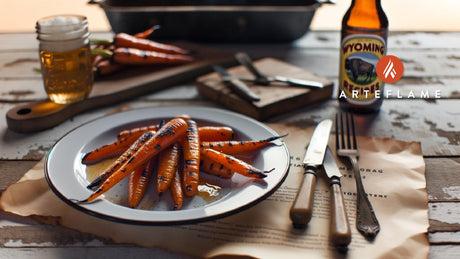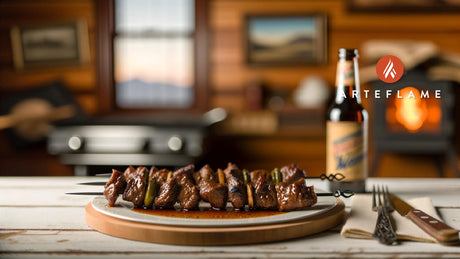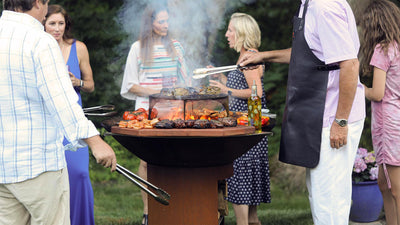Introduction
This Texas-style grilled duck breast recipe is all about bold flavor, rich molasses glaze, and steakhouse-quality searing using the Arteflame grill. With high-heat searing over the center grill grate clocking in at over 1,000F, followed by a reverse sear finish on the flat cooktop, you'll lock in every juicy bit of this deliciously glazed duck. With no lids, no flare-ups, and virtually no cleanup, this recipe is as enjoyable to make as it is to eat.
Ingredients
- 4 duck breasts, skin on
- 1/4 cup molasses
- 2 tablespoons Dijon mustard
- 1 tablespoon soy sauce
- 1 tablespoon apple cider vinegar
- 1/2 teaspoon smoked paprika
- 1/2 teaspoon garlic powder
- Salt and freshly cracked black pepper, to taste
- 2 tablespoons unsalted butter
Instructions
Step 1: Fire up the Arteflame Grill
- Pour a little vegetable oil on three paper napkins.
- Place the napkins in the center of your Arteflame grill.
- Stack firewood over the napkins.
- Light the paper. In about 20 minutes, your grill will be ready for grilling with a beautifully hot center grate over 1,000F.
Step 2: Prepare the Duck Breasts
- Pat the duck breasts dry with paper towels.
- Score the duck fat in a shallow crosshatch pattern without cutting into the meat.
- Season both sides generously with salt, black pepper, and smoked paprika.
Step 3: Make the Molasses Glaze
- In a bowl, whisk together molasses, Dijon mustard, soy sauce, apple cider vinegar, garlic powder, and a pinch of black pepper.
Step 4: Sear the Duck
- Place each duck breast skin-side down directly on the center grill grate for a high-heat sear for 2-3 minutes until the fat renders and crisps up.
- Use tongs to flip and sear the other side for 1-2 minutes.
Step 5: Finish on the Flat Top Cooktop
- Move the duck breasts to the flat cooktop griddle closer to the outer edge for a gentler heat.
- Brush with the molasses glaze and continue cooking until the internal temp reaches about 130°F for medium rare (remove at 115°F).
- Optional: Baste with a little butter while glazing for deeper flavor.
Step 6: Rest and Serve
- Remove duck breasts from the grill when internal temperature is 15°F below your final target temp.
- Let rest 5-10 minutes before slicing to ensure juices redistribute.
Tips
- Always score the duck fat to allow it to render properly and keep the skin crispy.
- Resting meat is essential – your duck will continue to cook slightly off-heat.
- Use butter instead of oil for better flavor and a beautiful glisten on the glazed duck breast.
- Use the different heat zones of the Arteflame griddle for perfect temperature control.
- Don’t rush the glaze – layer it gradually as the duck finishes grilling.
Variations
-
Texas Maple Glazed Duck: Substitute molasses for maple syrup for a sweeter, more caramelized finish.
-
Spicy Chipotle Duck: Add minced chipotle peppers and adobo sauce to the glaze for smoky heat.
-
Bourbon-Glazed Duck: Mix in 1 tablespoon of bourbon to the glaze for Southern flair.
-
Orange Zest Glazed Duck: Add 1 teaspoon of orange zest for floral citrus balance to the sweetness.
-
Honey Garlic Texas Duck: Use honey instead of molasses and mix in a bit of minced fresh garlic for rich sweetness.
Best pairings
- Grilled sweet potatoes with rosemary and butter
- Crisp coleslaw with apple cider dressing
- Grilled corn with lime and cotija cheese
- Texas-style baked beans
- Dark red Zinfandel or a smoky Tempranillo wine
Conclusion
Grilled duck breast can be intimidating – but mastering it on the Arteflame grill using the reverse sear method makes it a foolproof, flavor-packed dish worthy of any Texas gathering. The rich molasses glaze compliments the bold flavor of duck while the flat cooktop sears it perfectly with zero burning.
